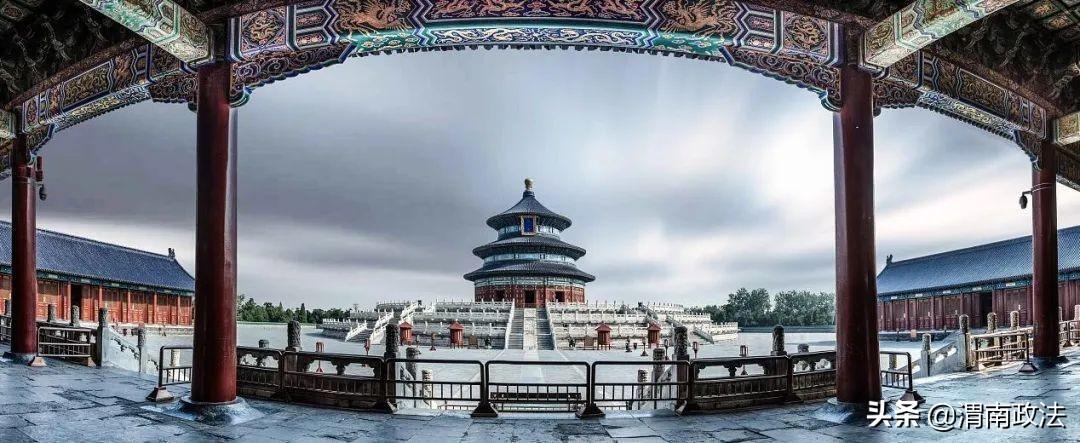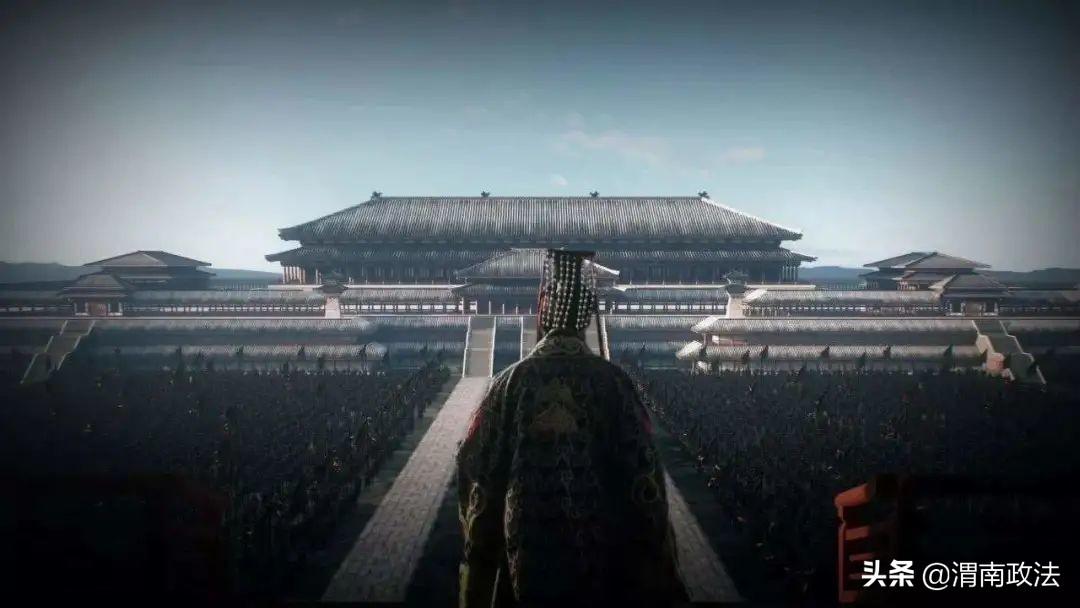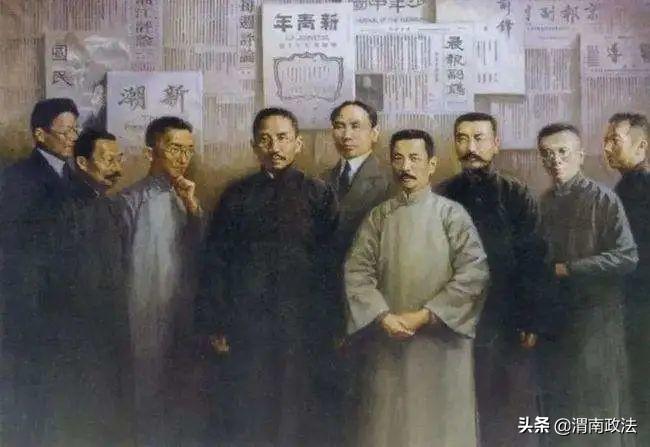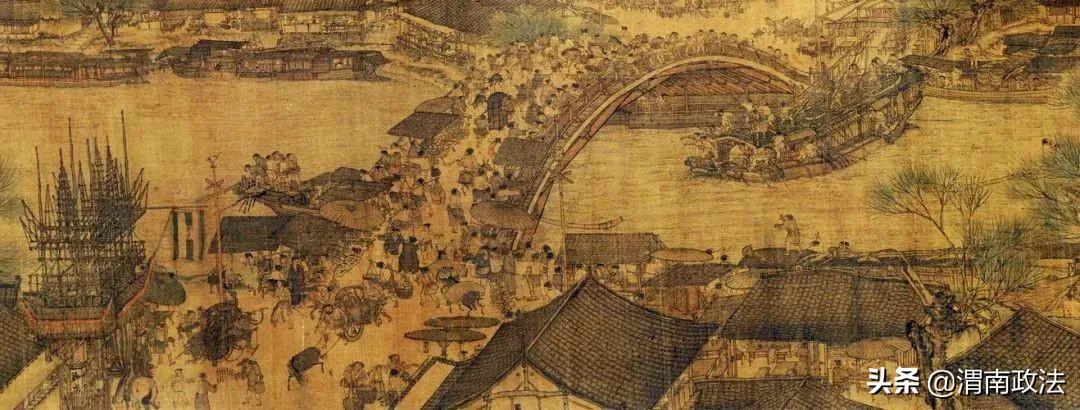Author: Ge Zhaoguang (Professor, Institute of Literature and History, Fudan University)
The topic I am going to talk about today is a very common topic-what is the "China’s" culture? A little special is that I put the words "China’s" in quotation marks, because what I mainly discuss is what can be regarded as China’s culture.
Why do you want to discuss this issue?
As we all know, there have been many discussions about China culture since the late Qing Dynasty, from Lin Zexu and Wei Yuan’s "opening their eyes to see the world" to the May 4th New Culture Movement and the "cultural craze" in the 1980s. Why are we discussing this issue today? This is because I have the following special considerations, first of all, "tell the truth."
First, our past discussions about China culture, or the definition of China culture, are often exaggerated and specious. We have some highly generalized adjectives, but to be honest, you don’t know what he is talking about after listening to it, which is not in line with the habit of a historian. I’m going to tell you something specific today, that is, what can be regarded as "China’s culture".

Second, I also have my concerns. In recent years, many people are keen to talk about China culture, such as "China culture going abroad" and "China culture’s significance in the world". However, when many people talk about "China culture", they will first "narrow it down". As we all know, China is a multi-ethnic country now, but some people have narrowed China culture into Han culture, then narrowed it into Confucian culture in Han nationality, and then narrowed it into Confucian culture that he thinks is orthodox and classic, which makes us misunderstand what China culture is.
Thirdly, I am very worried that when we talk about "China culture", some people have a strange sense of cultural superiority that comes from nowhere. Therefore, under the background of the so-called "rise of China", many people will have an illusion that our China culture is superior to other cultures. Actually, culture is a phenomenon, a feature,There is no high or low culture and no high or low nation.Therefore, we need to know China culture rationally, historically and consciously now, so that we can have an attitude of mutual communication, mutual understanding and equality with various nationalities and cultures.
Five typical characteristics of China culture.
What I want to make clear today is what is a typical China culture. In other words, that is, the characteristics of China culture, what is obvious in China and not obvious in foreign countries, what is in China and not in foreign countries, so that we can call it "China culture". However, I have to make a definition here. The following is mainly about the culture of China, a Han nationality.
The first is reading, writing and thinking through Chinese characters.This is very important. You know, except for a few Dongba characters of Naxi nationality in China, all pictographic characters have basically disappeared in life, and only Chinese characters are still in direct contact with their original pictographs and originality.
Some Chinese characters are pictographic, such as the sun, the moon, the wood, the fire, the water, the hand and the knife, etc. This was called "Wen" in ancient China. In Zhang Taiyan’s view, this is the most basic Chinese character unit "Chuwen". This is the ancient people’s direct description of what he saw through images. However, if these words are not enough, we should add understanding, that is, add some symbols to mark the meaning on some hieroglyphics. For example, adding a little to the blade is the "blade"; Claw on the tree is "picking"; Cattle are locked in a pen, which is "prison" Knowing is still not enough, just add sounds and become pictophonetic characters, such as rivers, pines and cypresses.
The basic Chinese characters are mainly these three categories. Of course, there are six kinds of six books, but these three categories are the main ones. As you can see, these three categories are based on shape. Therefore, speaking, thinking, reading and writing with Chinese characters will bring many features, and there may be some.Emphasis on feeling and association, but the grammar is relatively simple.The characteristics of.
I often cite an example. China people have a natural feeling and association with "writing" and "character". The word "person" in ancient times is a person at first glance. If this person’s mouth is facing the sky, it is a "brother". A brother is not a brother’s brother, but a celebration "wish". A person’s mouth is facing the sky, which means "wish" and "curse". What is a person’s mouth facing forward? It is the "owe" of yawning. But what if this mouth falls back? Since it is "since", it means that you will not eat after eating, so it means "since", that is, it is over. Chinese characters are very interesting, which forms many characteristics of China culture. In short, the use of Chinese characters has brought about the development of calligraphy and the development of poetic temperament, such as antithesis and leveling, which are unique to monosyllabic Chinese characters. In ancient China, Chinese characters, a pictographic-based writing, have never been interrupted in history. It has greatly influenced our thinking, reading and writing, and even affected East Asia, forming the so-called "Chinese character cultural circle".
The second feature is "family, family, country and Confucianism produced in this social structure".This is very influential. When I am in class, especially for foreign students, I have to ask a question, which is, what should Jia Baoyu call Lin Daiyu, Xue Baochai and Shi Xiangyun? Foreigners are always confused. They say sister, I say, it’s not that simple. In Chinese, it’s cousin, but it’s still not that simple. Strictly speaking, Lin Daiyu is Jia Baoyu’s aunt cousin, Xue Baochai is Jia Baoyu’s aunt cousin, and Shi Xiangyun is a cousin after two generations.Why is China’s appellation so complicated?
This is because China’s family, clan and clan community, in order to be orderly, must define the relationship between distance and closeness very clearly, which involves China’s ethical principles and hierarchical order. To put it simply, there are actually two principles here. One is "there is a difference between inside and outside". Parents and husband and wife are divided into inside and outside, that is to say, female relatives and male relatives are not the same in rank. For example, uncle, uncle, that’s your father’s party, with the same surname; But, uncle and aunt, that’s the mother party, with different surnames. Therefore, grandparents are outside and grandparents are inside. In ancient China, it was clearly divided.
The second principle is "order from top to bottom". It must be made clear that the top and bottom are equal, and the division is clear and can’t be chaotic. These two principles are most obvious in the mourning system. After a person dies, what clothes to wear at this person’s funeral, on the one hand, shows how close you are to the deceased, on the other hand, connects a big family, an enlarged family and a larger family community through mourning. China’s family, clan and family community are enlarged again, which is the country. Neither country nor state in the west means "home".China has a "country" and a "home country".Because in China’s concept world, the country is an enlarged home, and the home is a reduced country, and the ethics of being orderly up and down and having other things inside and outside are also very strict at the national level. It is on this basis that Confucianism came into being.
Thirdly, a very important feature of China culture of Han nationality is the belief world of "three religions in one".Song Xiaozong, Emperor Yongle and yongzheng emperor all said almost the same thing, that is, "Confucianism governs the world, Buddhism governs the mind and Taoism governs the body". In other words, Confucianism is in charge of social governance, Buddhism is in charge of spiritual cultivation, and Taoism is in charge of physical cultivation. The three religions seem to be quite harmonious. In fact, historically, this truth is very simple. In China, Buddhism and Taoism have no absoluteness and sacredness, so it is difficult to see debates between religions and wars between religions. This is a characteristic of China.
The fourth feature is China’s most interesting Yin-Yang and Five Elements.Forget about Yin and Yang. There are two principles in the Five Elements. One is the mutual generation, the golden water, the aquatic wood, the wood fire, the fire earth, and the native gold, which are the samsara of mutual generation; Jin Kemu, Mu Ke Tu, Tu Ke Shui, Shui Ke Huo, Huo Ke Jin, this is the rotation of Xiang Ke. The second principle is that the five elements can connect everything in series, for example, the five elements can be matched with five parties, southeast, northwest and middle; Can be matched with five colors, blue, white, red, black and yellow; It can be matched with five tones, and the Gong Shang angle is feathered; It can also be served with five flavors, sweet and sour, spicy and salty, and so on. Connecting everything into a big network is the knowledge basis of our ancestors’ understanding of everything in the universe. Now we have studied science and have doubts about this, but in ancient times, this was the most critical basis for our understanding of the world, and on this basis, a whole set of knowledge and technology was produced.
Fifth, China’s concept of the world,In our modern words, China’s ancient world outlook is very different from that of other countries and nations. In ancient China, there was a place where the universe was imagined to be round, that is, the sky was round like a cover and the place was like a chess game. That is, the sky is round, like a hat, and it is like a chess board. Where is the center of the sky? The ancients imagined that in the North Pole. The ancients watched the celestial phenomena at night. In the vision, the sky is turning, but the earth is not. Therefore, "Heaven turns left". When you face north, the sky turns left, and you will feel that there is a place that never moves. This is the North Pole, which is the pole we are talking about now.
Where did the ancients think the center of the earth was? Luoyang is the center of the earth. This is because when this concept was formed, it was probably the Eastern Zhou Dynasty, when Wang was in Luoyang. Luoyang is the most remarkable, especially, on the day of the summer solstice, "there is no shadow under the sun." So,In ancient China, Luoyang was the center.Imagine zooming in and out, this is the shape of the earth, so there is a saying of "nine clothes" or "five clothes". Every five hundred miles, there are five hundred miles on each side, which is a thousand miles, and the "five clothes" is five thousand miles, and the earth is so square.
However, it is very important to form an idea from here, that is, the more people in the center, the higher the level of civilization.The more people on the edge, the lower the level of civilization. This is Na Man, Bei Di, Dong Yi and Xi Rong. China formed the concept of "Hua Yi" very early.That China people are civilized people and the people around them are barbarians, and barbarians have formed a set of "world concept", that is, imagining the world with me as the center. This imagination and concept gradually developed, which not only became a cultural concept in ethnography and geography, but also formed a political system, namely "tribute system".

If these five aspects are combined together, it constitutes a very obvious culture belonging to China, the Han nationality. However, it needs to be emphasized again that modern China is a mixture of five parties, and even the Han nationality itself is a mixture of five parties. From the Qin and Han Dynasties to the Sui and Tang Dynasties, in fact, foreigners came in constantly, and the Han nationality was gradually absorbed, integrated and mixed with other nationalities.
I have been saying that China culture is plural culture, not singular culture. If you don’t have this idea, you may become blind cultural arrogance.
03 different from the previous cultural transformation
Historically, China has always "changed within the tradition", and the mainstream culture has always been adjusted within the traditional system of Han culture. This is because in ancient China, no culture, whether Buddhism, Sanyi religion, Islam or Catholicism in the Ming and Qing Dynasties, can challenge and change this Han China culture. Therefore, the changes are all adjustment, adaptation, reform and change within the tradition. However, in the late Qing Dynasty, China had to "change outside the tradition" and go beyond the tradition, and its culture was facing a crisis.
From 1895 to 1919, this is the most important period of China’s ideological and cultural transformation. During this period, you will see many changes, for example, the emperor became the president, the Manchu empire became the Republic of China with five nationalities, and the traditional empire had to become a modern country; Abolish the imperial examination and set up schools; Opening parliament and establishing political parties; Cut off the braid and put on a dress; Stop bowing and shake hands; Women’s liberation and equality between men and women; Get rid of superstition and advocate science; Untie the bondage and get out of the family. In the past, the so-called "three cardinal guides and five permanent members" have changed and become very thorough and powerful. Facing the western and oriental powers, China people are in an anxious and nervous state of mind. It’s hard to see the self-confidence and stability in the past, and elegance, generosity and calmness are becoming more and more out of date.

Accordingly, the five aspects of the culture of China, the Han nationality, which we just talked about have also changed.
Although most people in China still use Chinese characters, great changes have taken place in modern Chinese.
First, the May 4th New Culture Movement advocated vernacular Chinese. It is undoubtedly very correct to advocate vernacular Chinese, because it is necessary to popularize the literacy rate and improve the cultural level of the people. However, there has also been aNew and old cultural fractureThe problem. The former written language, that is, classical Chinese, represents elegance, courtesy and dignity, and also represents education and culture. Now it is no longer there. When the previous spoken language becomes written language, elegant words and common sayings lose their equal rank, and at the same time, elegance and vulgarity are no longer different. I don’t know if you have this feeling now. Since the vernacular has become the mainstream, there is no longer an elegant way to write letters. With the popularization of computers and the popularity of the Internet, the style of language and culture has disappeared. For example, students write to me without signing their names, and finally they say "Hehe". There is no difference between elegance and vulgarity. Secondly, modern Chinese is mixed with too many modern or western new words. After these words come in, the world we perceive through language has changed. Thirdly, especially after 1950s, China advocated simplified Chinese characters, which widened the distance between the characters and the original image. Although simplified Chinese characters are easy to learn, they are more and more like abstract symbols without the original "shape". In traditional Chinese culture, problems arise through the thinking, writing and expression of images.
Second, there are also problems in family, family, country and Confucianism. Although some traditional families and family organizations are still maintained in modern China, especially in rural areas, China people still attach great importance to family, affection and obedience to their superiors. However, urbanization, small families and population mobility have changed the structural relationship between family, society and country. In the past, the close and interdependent neighborhood, township party and family relations have gradually disappeared in the process of modernization. Therefore,Confucian family ethics and state theory have gradually lost their original social foundation.
The third is to believe in the world. Since the late Qing Dynasty, under the impact of western democratic ideas, Confucianism has gradually been unable to bear the heavy responsibility of political ideology. Under the impact of western scientific ideas, Buddhism and Taoism have been tied down by "breaking superstition" and gradually withdrew from the real world of spirit, knowledge and belief.More and more secularization, institutionalization and tourism.Therefore, the traditional belief world is also in crisis.
The fourth one isyin-yang and five elementsUnder the impact of science, it is becoming more and more difficult to maintain, and it can’t completely explain everything in the world now. The theory of yin-yang and five elements is still preserved in the fields of traditional Chinese medicine, geomantic omen, food supplement and so on. In the whole modern knowledge system, it has reached a very marginal place.
The fifth is "from the world to all nations", and the basic concept of the world has changed. After the late Qing Dynasty, the Western Ocean entered the East, which not only destroyed China’s concept of the world and the tributary system, but also redefined the relationship between China and other countries in the world. The world outlook, world outlook, tribute or canonization system in ancient traditions are completely unrealistic.
The above changes show that China culture, especially China culture of Han nationality, has been in an era that needs to be re-recognized, re-understood and re-updated.
What is the difference between "culture" and "civilization"
Today, I have repeatedly stressed that there is no difference between different cultures, only civilization is different in degree. On the basis of such an understanding, we may be able to alleviate the long-term anxiety and tension. I’d like to quote a German scholar iria’s opinion here. In his book The Process of Civilization, he suggested that "culture" and "civilization" can be defined and distinguished, that is, "culture" is something that shows differences between nations, and it always shows a nation’s self and characteristics. Therefore, it has no distinction between high and low. And "civilization" is those things that gradually reduce the differences between different ethnic groups, showing the universal behavior and achievements of human beings. In other words, it is"Culture" makes all ethnic groups different, and "civilization" brings all ethnic groups closer and closer.
Then iria pointed out that "culture" is a kind of personality and spiritual temperament that you don’t have to teach deliberately, but you can get it by hearing it, while "civilization" is often something that you need to learn, so it is always connected with words such as "educated", "knowledgeable" and "regular". It’s like saying that we often play with the ball, which is no problem, but I’m sorry, once you go to the basketball court, you can’t kick it with your feet, and you can’t hold it with your hands (except the goalkeeper) when you go to the football field. Many people have to have rules when playing together.
Although "culture" allows you to express your own characteristics at will, "civilization" gives you some restrictions and rules. If we understand "civilization" and "culture" in this way, we don’t have to be afraid of globalization and modern order, and we don’t have to worry that our culture will be eroded. The question is how to protect our unique culture and tradition in the universal civilization and rules.
Then, I must also explain that,The "culture" of various ethnic groups is often stubborn, and it shows a resistance to heterogeneous "civilization".There is no doubt that civilization is constantly eroding culture, and we admit this, because "civilization" is often advancing, and it always shows the tendency of colonization and expansion. In other words, "culture" is related to tradition, which is special, while "civilization" is related to the future, which is universal. How to coordinate the two?

Today, we are going to talk about the characteristics of China culture of Han nationality, so what we need to consider is,How to preserve special cultures under a universal civilization rule, and at the same time understand the rationality of these cultures in history in the era of modern civilization.
For example, while accepting and praising science, can we have some sympathetic and historical understanding of Yin-Yang and Five Elements? For another example, when we accept the universal laws and systems, can we have a little historical understanding of the ethics and moral standards of the traditional family, family and country in China? For another example, can we also have some warmth towards traditional religions when accepting new civilizations? Similarly, can we not only accept the principle of equality among nations, but also have a little understanding of China people’s historical habits of understanding the world? I personally study history. I have always believed that both culture and civilization must be viewed from the perspective of history. We admit that history is unchangeable. We should look back at culture and look at civilization in the future and have sympathy for both.
Source: History Research Society
Editor: Xu Aixue of Weinan Political Science and Law Network